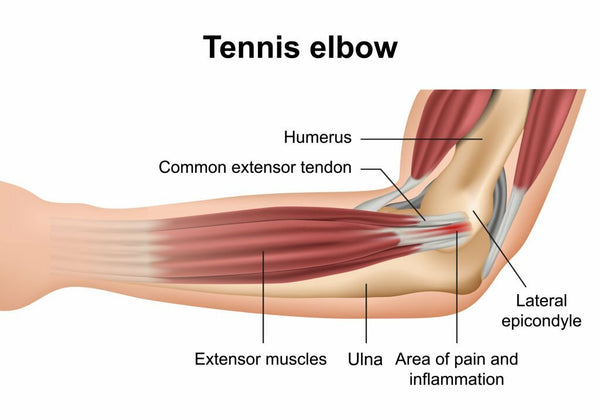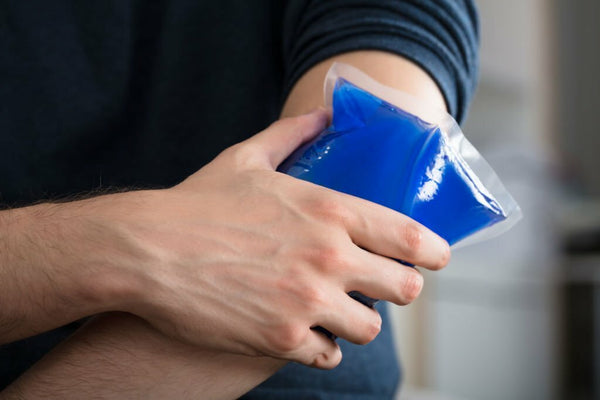Tennis elbow, also known as lateral epicondylitis, is a painful condition that affects the tendons that attach the forearm muscles to the elbow. These tendons are responsible for extending the wrist and straightening the fingers. Tennis elbow is caused by overuse of these tendons, which can lead to inflammation, microtears, and degeneration.
Who is at risk for tennis elbow?
Anyone who uses their forearm muscles repetitively is at risk for tennis elbow. This includes people who play racquet sports, such as tennis, squash, and badminton, as well as people who do manual labor, such as carpentry, painting, and plumbing.
What are the causes of tennis elbow?
The main cause of tennis elbow is overuse of the forearm muscles. This can happen from activities that involve repetitive wrist extension, grasping, and lifting. Other activities that can contribute to tennis elbow include:
- Using a computer mouse or keyboard for extended periods of time
- Playing golf
- Gardening
- Using a hammer or screwdriver
What are the symptoms of tennis elbow?

The main symptom of tennis elbow is pain on the outside of the elbow. The pain may also radiate down the forearm and into the fingers. Other symptoms of tennis elbow include:
- Weakness in the grip
- Difficulty extending the wrist
- Tenderness on the outside of the elbow
- Pain when gripping objects
Treatments of Tennis Elbow

There are a number of treatments available for tennis elbow, including:
- Rest: The most important treatment for tennis elbow is rest. This means avoiding activities that aggravate the pain, such as playing tennis or other racquet sports.
- Ice: Applying ice to the elbow for 15-20 minutes at a time, several times a day, can help to reduce pain and inflammation.
- Over-the-counter pain relievers: Over-the-counter pain relievers, such as ibuprofen or naproxen, can help to relieve pain and inflammation.
- Physical therapy: Physical therapy can help to strengthen the muscles and tendons around the elbow and improve flexibility.
- Corticosteroid injections: Corticosteroid injections can provide temporary relief of pain and inflammation.
- Extracorporeal shockwave therapy (ESWT): ESWT is a non-invasive treatment that uses sound waves to break down scar tissue and promote healing.
- Platelet-rich plasma (PRP) therapy: PRP therapy involves injecting the patient's own blood plasma, which is rich in platelets, into the injured tendon.
- Surgery: Surgery is rarely necessary for tennis elbow. However, it may be an option for patients who have not responded to other treatments.
Most people with tennis elbow will improve with non-surgical treatments. However, it can take several months for the pain to completely go away.
Prevention Tips for Tennis Elbow
- Warm up before activities:Warming up your muscles before playing sports or engaging in any activity that uses your forearm muscles can help to prevent injury.
- Use proper technique: Using proper technique when playing sports or performing activities that involve repetitive movements can help to reduce stress on the tendons in the elbow. For example, make sure you are using the correct grip size for your racquet or tool, and that you are using your arm muscles to generate power, not just your wrist muscles.
- Strengthen your forearm muscles: Strengthening the forearm muscles can help to protect the tendons from injury. There are a number of exercises you can do to strengthen your forearm muscles, such as wrist curls, finger extensions, and forearm pronation and supination.
- Avoid overuse: Overusing the forearm muscles can increase the risk of tennis elbow. If you are feeling pain in your elbow, take a break from the activity that is causing the pain.
- Use a tennis elbow brace: A tennis elbow brace can help to support the tendons in the elbow and reduce pain.
Conclusion
There are a number of things you can do to prevent tennis elbow, including warming up before activities, using proper technique, strengthening your forearm muscles, avoiding overuse, and using a tennis elbow brace.
If you are experiencing pain in your elbow, it is important to see a doctor to get a diagnosis and discuss treatment options.











